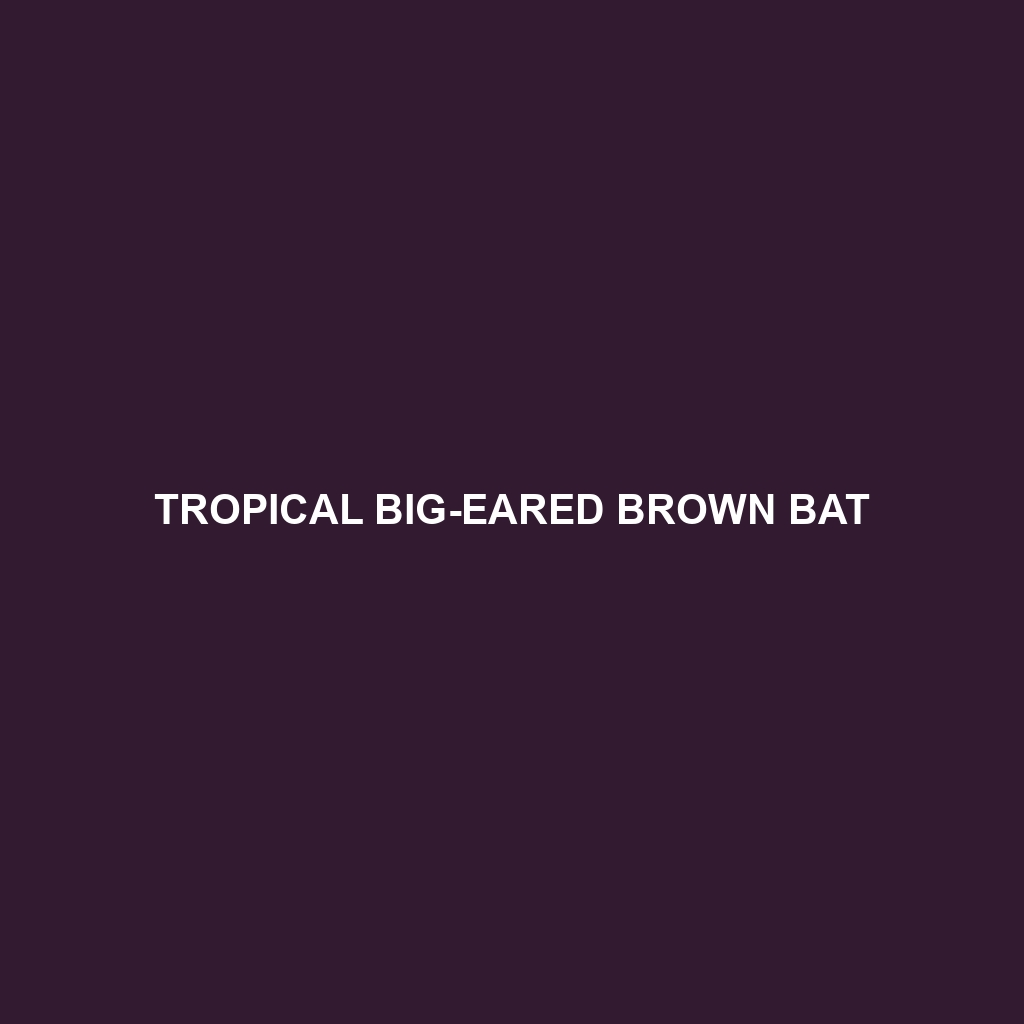-

Trujillo’s Yellow Bat
Discover the captivating Trujillo’s Yellow Bat, a vibrant nocturnal species found in the humid forests of Central and South America. With its distinctive bright yellow fur and expert echolocation skills, this bat plays a crucial role in controlling insect populations and maintaining ecological balance. Unfortunately, habitat loss has rendered it vulnerable, emphasizing the need for…
-

Ussuri Tube-nosed Bat
Explore the fascinating world of the Ussuri Tube-nosed Bat (Murina ussuriensis), a small yet intriguing species native to the temperate forests of East Asia. With its distinctive elongated nose and nocturnal foraging habits, this bat plays a crucial role in controlling insect populations while facing threats from habitat loss. Discover the unique characteristics, behaviors, and…
-

Watts’s Pipistrelle
Discover the intriguing world of Watts’s Pipistrelle, a small yet vital bat species found across Europe and parts of Asia. Learn about their unique habitats, impressive echolocation abilities, and essential role in controlling insect populations. Despite their conservation status being classified as “least concern,” these bats face significant threats, emphasizing the need for habitat protection…
-

Zulu Serotine
Discover the intriguing world of the Zulu Serotine, a medium-sized bat found in the grasslands and forests of southern and eastern Africa. Renowned for its remarkable echolocation skills and agile flight, this nocturnal predator preys on a variety of insects, playing a vital role in maintaining ecological balance. Learn about its habitat, behavior, and conservation…
-

Rüppell’s Broad-nosed Bat
Discover the remarkable Rüppell’s Broad-nosed Bat, a medium-sized nocturnal species native to the mountainous regions of Eastern Africa. With its distinctive broad snout and agile flying abilities, this bat plays a vital role in controlling insect populations while navigating dense forests using advanced echolocation skills. Learn about its habitat, diet, reproductive behavior, and the conservation…
-

Ryukyu Tube-nosed Bat
Discover the fascinating world of the Ryukyu Tube-nosed Bat (Murina ryukyuensis), a small but vital inhabitant of Japan’s Ryukyu Islands. With its distinctive tube-like nostrils and nocturnal foraging behavior, this vulnerable species plays a crucial role in maintaining ecological balance through insect control and pollination. Join us as we explore their unique habitat, behaviors, and…
-

Southern Yellow Bat
Discover the unique Southern Yellow Bat, a captivating species found in the southeastern United States, known for its striking yellow fur and preference for palm trees as roosting sites. This nocturnal insectivore plays a vital role in pest control and maintains ecological balance while showcasing fascinating social behaviors and strong maternal instincts. Explore its habitat,…
-

White-winged Serotine
Discover the fascinating world of the White-winged Serotine, a medium-sized bat known for its distinctive white wing patches and nocturnal foraging habits. Found in diverse habitats across Europe and Asia, this vulnerable species plays a crucial role in controlling insect populations and maintaining ecosystem balance. Learn about its unique adaptations, breeding behaviors, and the conservation…
-

Nyanza Serotine
Discover the captivating world of the Nyanza Serotine, a medium-sized bat thriving in the diverse ecosystems of East Africa. Explore its impressive adaptability, unique foraging behaviors, and vital role in controlling insect populations, all while facing the challenges of habitat loss. Learn more about this vulnerable species and its importance in maintaining ecological balance in…
-

Tropical Big-eared Brown Bat
Discover the fascinating world of the Tropical Big-eared Brown Bat, a vital species inhabiting the lush forests and urban areas of Central and South America. With their distinctive large ears and remarkable echolocation abilities, these bats are adept insect hunters, consuming up to 3,000 insects in a single night. Learn about their habitat, behavior, and…
Search
Popular Posts
-
Liolaemus crandalli
Discover the unique Liolaemus crandalli, or Crandall’s liolaemus, a striking lizard native to the temperate forests and grasslands of southern Chile and Argentina. Measuring 8 to 12 cm, this diurnal insectivore features a slender body with vibrant coloration in males during breeding, and plays a vital role in its ecosystem by controlling insect populations and…
Categories
Tags
animal adaptations (890) animal behavior (4960) animal reproduction (851) behavior (920) biodiversity (7661) conservation (1670) conservation efforts (1732) conservation status (5528) diet (2102) echolocation (822) ecological balance (1967) ecological role (1831) ecosystem (1469) ecosystem role (2842) endangered species (2499) environmental conservation (821) habitat (3274) habitat conservation (1090) Habitat Destruction (1326) habitat loss (3314) insectivorous reptiles (881) IUCN Red List (1847) lizard reproduction (909) nocturnal animals (2751) nocturnal behavior (2548) nocturnal reptiles (992) physical characteristics (2047) predator-prey relationships (837) reproduction (2884) reptile behavior (914) reptile conservation (1236) reptile reproduction (935) rodent species (1325) seed dispersal (2131) Seed Disperser (977) small mammals (1166) snake behavior (848) snake diet (954) snake reproduction (1036) South America (806) tropical forests (946) Vulnerable Species (4837) wildlife (2510) wildlife conservation (5178) wildlife protection (983)



